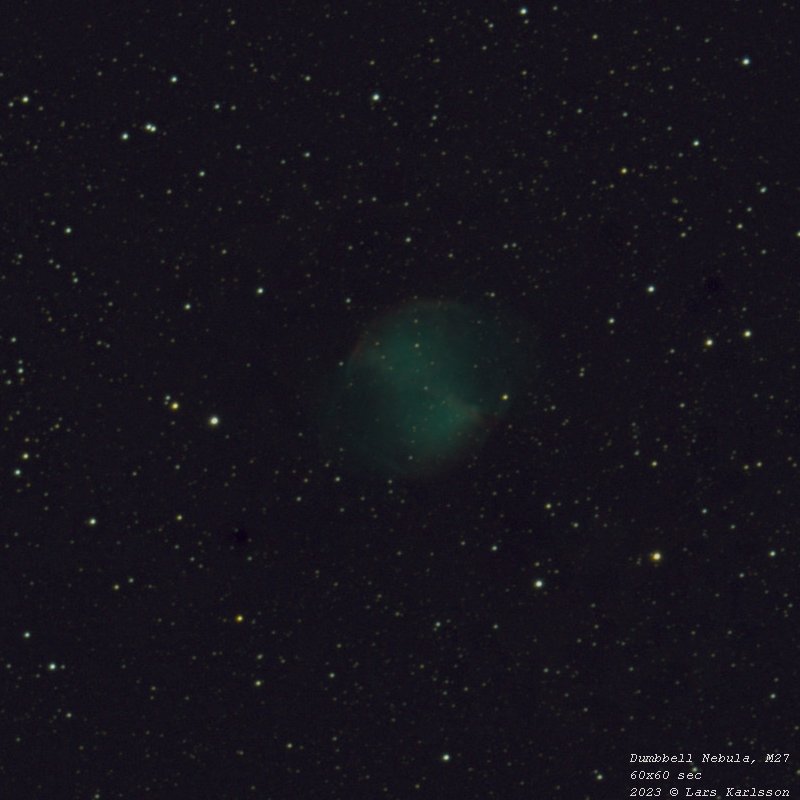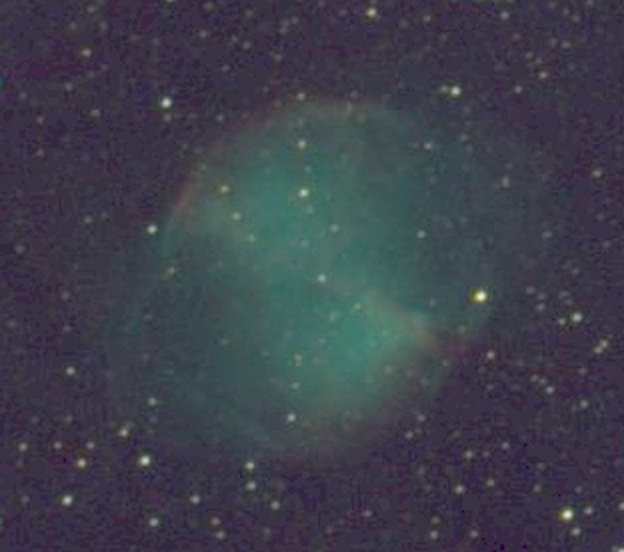|
Advertisement / Annons: |
Planetary Nebula |
| Object : | M27 |
| Coordinates/Direction : | RA: 19h59m, DEC: +22o43' |
| Object size : | 8.0' x 5.6' |
| Object magnitude : | 7.4 |
| More to know : |
Wikipedia: https://en.wikipedia.org/ wiki/ Dumbbell Nebula |
M27 Crop, 2016-04-29 (Click on image to get a full resolution one in a new window)
(Click on image to get a full resolution one in a new window)
|
| Date : | 2016-04-29 |
| Time (UT) : | 00:38 to 01:32 |
| Mount : | SkyWatcher EQ6 Pro, Belt drive, beltdrive modified (DIY 2019) |
| Guide : | QHY5 camera with off-axis |
| Lens/telescope : | TS130 APO f/7 910mm (682mm, f/5.2), 3" focuser |
| Corrector/Barlow : | Riccardi 2.5" field flatter, x0.75. T48 connector to camera |
| Field (FOV) : | 3.0 x 2.0o (full frame) before crop |
| camera : | Canon 6D, QE=0.5, full frame, 20 Mpixel, 14 bit |
| camera temperature: | About 6o C above surrounding temperature |
| Film/CCD : | Raw, Cr2 |
| Filter : | none |
| Control system : | Mount by EQMOD, camera by APT, guide by PHD2, focuser by USB-focus, ASCOM Windows PC |
| Exp. time : | 36x60 seconds, iso800, dithering mode |
| Image process tool : | Siril, Gimp, Irfanview |
| Processing : | cal bias, flat and astro metric color calibration |
| Weather : | clear |
| Site : | Sweden, Stockholm, Hagsätra.
Bortle 9 Free view Az: 20o to 90o, 165o to 185o, Alt: 20o to 55o |
| Comment : | Planetary Nebulas are always beautiful to look at through a telescope. Small but with rich colors which can be seen when photographing them. M27 was the first planetary nebula to be discovered, by Messier 1764. |
M27, Zoom in 2016-04-29
|
| Date : | 2016-04-29 |
| Time (UT) : | 00:38 to 01:32 |
| Comment : | Zoom into the nebula and increased color saturation. You don't find many other objects around the nebula too: M27 plate solved by Astrometry. |
|
| Go Back |